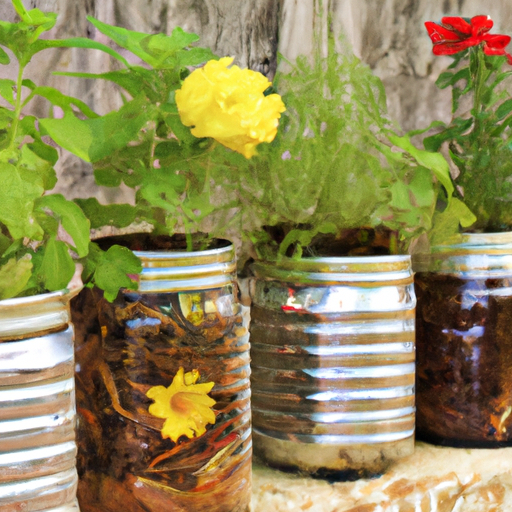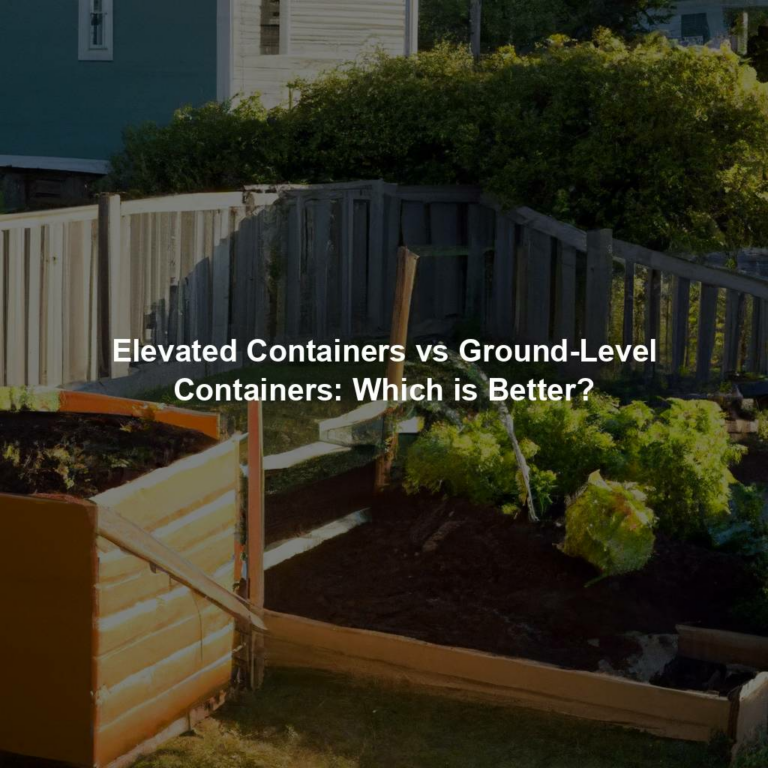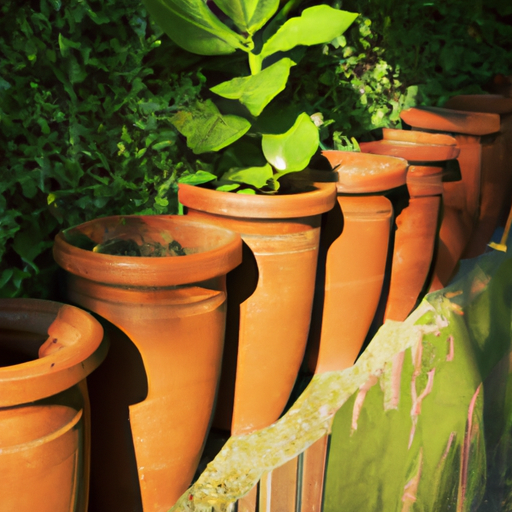As a Master Gardener, one of the most common questions I receive is about container size. Does it really matter? The answer may surprise you.
Choosing the right size container can have a significant impact on your plants’ health and ultimately their productivity.
While it may be tempting to choose smaller containers for convenience or space-saving purposes, this can actually hinder plant growth and development.
On the other hand, larger containers can provide more room for roots to spread out and access nutrients, leading to healthier and more productive plants.
In this article, we’ll explore the importance of choosing the right size container for your specific plants and growing conditions.
Understanding Plant Needs
As a Master Gardener, one of the most crucial aspects of plant care is understanding their needs.
Soil quality and water retention are two critical factors that can make or break your garden’s success.
Choosing the right size container for your plants is essential to ensure they have enough space for their roots to grow, access to proper nutrients in the soil, and adequate moisture levels.
The wrong container size can lead to root-bound plants with stunted growth and poor health.
By selecting an appropriate-sized pot, you provide room for healthy root development while also allowing for better control over soil moisture content.
Don’t underestimate the importance of choosing the right container size; it could be the difference between a thriving garden and one struggling to survive.
Assessing Your Growing Space
Assessing Your Growing Space is crucial to the success of your gardening endeavors.
Evaluating limitations such as available sunlight, water access, and soil quality will help you determine what plants are best suited for your space.
Maximizing potential can be achieved by utilizing vertical growing techniques or choosing compact plant varieties.
Understanding the dimensions of your growing area will also aid in selecting appropriate container sizes.
Remember that larger containers may offer more room for root growth but require more frequent watering, while smaller containers may limit plant size but need less maintenance.
By taking the time to assess your growing space and considering these factors, you can make informed decisions when it comes to selecting plants and containers, resulting in a fruitful harvest.
Benefits Of Larger Containers
As the saying goes, “bigger is better” when it comes to gardening containers. Using larger containers can have a significant impact on maximizing growth and improving cost efficiency in your garden. By providing ample space for roots to grow and spread out, plants are able to access more nutrients and water, resulting in healthier and stronger growth. Additionally, larger containers require less frequent watering than smaller ones, saving you time and money in the long run. To illustrate this point further, take a look at the table below comparing plant growth between two sizes of containers:
| Container Size | Plant Growth |
| — | — |
| Small (6 inches) | Limited root development|
| Large (12 inches)| Robust root system with increased foliage|
As you can see, using a larger container leads to greater plant growth overall. While it may seem like bigger containers come with a higher price tag upfront, their cost efficiency over time makes them well worth the investment. As a Master Gardener, I highly recommend considering larger container sizes for optimal results in your garden.
Drawbacks Of Smaller Containers
When it comes to choosing the right size container for your plants, smaller doesn’t always mean better. In fact, there are some significant drawbacks to using containers that are too small for your plants.
One of the biggest issues is plant growth restriction. When a plant’s roots don’t have enough space to grow and spread out, they can become root-bound, which can stunt their growth and even kill them over time.
Additionally, smaller containers can also lead to soil restrictions. With less room for soil in the container, there is less available nutrients and water for the plant. This means you’ll need to be extra diligent about watering and fertilizing if you choose to use smaller containers.
Overall, while smaller containers may seem like a good idea at first glance (they’re cheaper and take up less space!), they can actually do more harm than good when it comes to growing healthy, thriving plants. Instead, opt for larger containers that allow your plants plenty of room to grow and flourish without any unnecessary constraints or limitations.
Tips For Choosing The Best Container Size
As the saying goes, ‘size matters’ when it comes to container gardening. While smaller containers may have some drawbacks such as limited root space and frequent watering, choosing the best container size for your plants is crucial in ensuring their growth and health.
One important consideration when selecting a container size is the material of the pot itself. Terra cotta pots, for instance, are porous and can dry out quickly, whereas plastic or glazed ceramic pots retain moisture better.
Another factor to keep in mind is drainage – make sure that there are adequate holes at the bottom of your chosen container to prevent waterlogging which could lead to root rot or other issues.
By taking into account these container material and drainage considerations, you can select the appropriate size for your plants’ specific needs and give them the best chance at thriving in your garden.
Frequently Asked Questions
How Do I Know If I Need To Repot My Plant Into A Larger Container?
As a Master Gardener, one of the most common questions I receive is about repotting plants.
Signs of overcrowding include roots growing out of drainage holes, stunted growth, and soil drying out quickly.
The best time to repot is when your plant has become root-bound or during its active growth season.
Before repotting, it’s essential to choose the right soil mix and container size for your plant’s needs.
Additionally, root pruning can benefit some plants by encouraging healthier root systems and preventing them from becoming too large for their containers.
Remember that proper care and attention to your plant’s environment are crucial for its overall health and vitality.
Can I Use A Container That Is Slightly Larger Or Smaller Than The Suggested Size For My Plant?
When it comes to choosing a container for your plant, size matters. The correlation between container size and plant growth is not just a coincidence.
Using a container that is slightly larger or smaller than the recommended size can have an impact on soil moisture retention, which in turn affects the overall health of your plant.
As a Master Gardener, I highly recommend selecting the appropriate sized container for your specific plant species to ensure optimal growth and vitality.
Don’t let something as simple as container size hinder your gardening success!
Is There A Limit To How Large Of A Container I Can Use For My Plant?
As a Master Gardener, I often receive questions about how to properly care for plants. One query that comes up frequently is whether there’s a limit to the size of container one can use for their beloved greenery.
It’s important to understand the correlation between container size and plant growth – is it simply coincidence or something more? While larger containers may seem like they offer ample space for roots to grow, excess soil can lead to water retention issues which negatively impact plant health. Conversely, smaller containers restrict root growth and ultimately stunt plant development.
Balancing container size with your plant’s needs is crucial in ensuring its overall well-being. Remember, every plant has unique requirements; don’t hesitate to consult resources or seek advice from professionals before making any decisions!
Will Using A Larger Container Help My Plant Grow Faster Or Produce More Fruit/Flowers?
Using a larger container for your plant can have its pros and cons.
On one hand, more soil means the roots have more space to grow which could result in bigger plants and possibly more fruit/flowers.
However, it’s important to consider best practices when choosing a container size as too much soil can cause moisture retention issues leading to root rot or mold growth.
Additionally, using a large container unnecessarily may mean you’re wasting resources on extra soil and water that aren’t being utilized by the plant.
It’s always best to choose a container size that is appropriate for your specific type of plant and its growing conditions rather than just going with the largest option available.
How Often Should I Water My Plants In Larger Containers Compared To Smaller Ones?
Watering frequency is a crucial aspect of plant care, and it can vary depending on the size of your container. Soil moisture levels are essential to ensure that plants receive adequate water without drowning their roots.
Larger containers hold more soil, which means they require less frequent watering than smaller ones. However, this doesn’t necessarily mean you should neglect watering altogether. It’s important to monitor soil moisture regularly and adjust your watering schedule accordingly.
As a Master Gardener, I recommend paying close attention to your plants’ needs and adjusting your watering frequency as necessary for optimal growth and health. Remember, healthy plants start with healthy roots!
Conclusion
In conclusion, choosing the right size container for your plant does matter. Repotting is necessary when roots become crowded and begin to grow out of drainage holes or when plants stop growing as they should. Using a slightly larger or smaller container than recommended can affect the health and growth of your plant. However, it’s important not to go too big with containers as this can lead to overwatering and root rot.
Did you know that a tomato plant in a 5-gallon container can produce up to 20 pounds of tomatoes? That’s enough juicy fruit to make delicious sauces, salads, and sandwiches all summer long!
As Master Gardeners, we understand that each plant has unique requirements for optimal growth. Providing adequate space for roots to spread out will ensure healthy soil moisture levels, leading to better nutrient uptake and faster growth rates.
So next time you’re considering repotting or starting a new planting project, take the time to choose the right-sized container – your plants will thank you!





